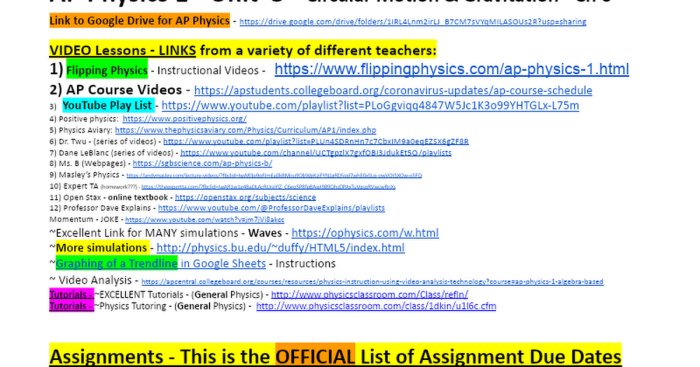Unit 3 circular motion and gravitation – Embark on a captivating exploration of Unit 3: Circular Motion and Gravitation, where the enigmatic forces that govern celestial bodies and everyday phenomena unravel before your eyes. This unit delves into the intricate interplay between objects in motion, revealing the fundamental principles that shape our physical world.
From the rhythmic dance of planets orbiting the Sun to the subtle sway of a pendulum, circular motion permeates our universe. Gravitation, the invisible yet omnipresent force, binds these celestial bodies together, dictating their trajectories and shaping the very fabric of spacetime.
Introduction

Circular motion is the movement of an object along a circular path. Gravitation is the force that attracts objects with mass towards each other. Both circular motion and gravitation are fundamental concepts in physics that have numerous applications in everyday life and scientific research.
Types of Circular Motion

Uniform Circular Motion
In uniform circular motion, an object moves along a circular path with constant speed. The object’s velocity vector is always tangent to the circle.
Non-Uniform Circular Motion
In non-uniform circular motion, an object moves along a circular path with varying speed. The object’s velocity vector is constantly changing in magnitude and direction.
- Examples of uniform circular motion include a car driving around a circular track at a constant speed, or a satellite orbiting the Earth at a constant speed.
- Examples of non-uniform circular motion include a car driving around a circular track at varying speeds, or a satellite orbiting the Earth in an elliptical path.
Forces in Circular Motion: Unit 3 Circular Motion And Gravitation
Centripetal Force
The centripetal force is the force that keeps an object moving in a circular path. The centripetal force is always directed towards the center of the circle.
The centripetal force is given by the equation:
Fc= mv 2/r
where:
- F cis the centripetal force
- m is the mass of the object
- v is the speed of the object
- r is the radius of the circle
Examples of forces that can act as centripetal forces include friction, tension, and gravity.
Gravitation

Concept of Gravitation
Gravitation is the force that attracts objects with mass towards each other. The greater the mass of an object, the greater its gravitational pull.
Law of Universal Gravitation
The law of universal gravitation states that every particle of matter in the universe attracts every other particle with a force that is directly proportional to the product of their masses and inversely proportional to the square of the distance between them.
The law of universal gravitation is given by the equation:
F = Gm1m 2/r 2
where:
- F is the gravitational force
- G is the gravitational constant (6.674 × 10 -11N m 2kg -2)
- m 1is the mass of the first object
- m 2is the mass of the second object
- r is the distance between the centers of the two objects
Examples of the effects of gravitation include the Earth’s orbit around the Sun, the Moon’s orbit around the Earth, and the tides.
Applications of Circular Motion and Gravitation
Applications of Circular Motion, Unit 3 circular motion and gravitation
Circular motion has numerous applications in everyday life, including:
- Rotating machinery (e.g., engines, generators, fans)
- Transportation (e.g., cars, trains, airplanes)
- Amusement park rides (e.g., roller coasters, Ferris wheels)
Applications of Gravitation
Gravitation has numerous applications in astronomy and space exploration, including:
- Calculating the orbits of planets and moons
- Designing spacecraft trajectories
- Understanding the formation and evolution of stars and galaxies
Quick FAQs
What is the difference between uniform and non-uniform circular motion?
Uniform circular motion occurs when an object moves in a circle with constant speed, while non-uniform circular motion occurs when the object’s speed varies as it moves around the circle.
What is the centripetal force?
The centripetal force is the force that keeps an object moving in a circular path. It is directed towards the center of the circle and is equal to the mass of the object multiplied by the square of its speed divided by the radius of the circle.
What are some examples of the applications of circular motion and gravitation?
Circular motion is used in a wide variety of applications, including amusement park rides, washing machines, and CD players. Gravitation is responsible for keeping planets in orbit around the Sun, the Moon in orbit around the Earth, and satellites in orbit around the Earth.

